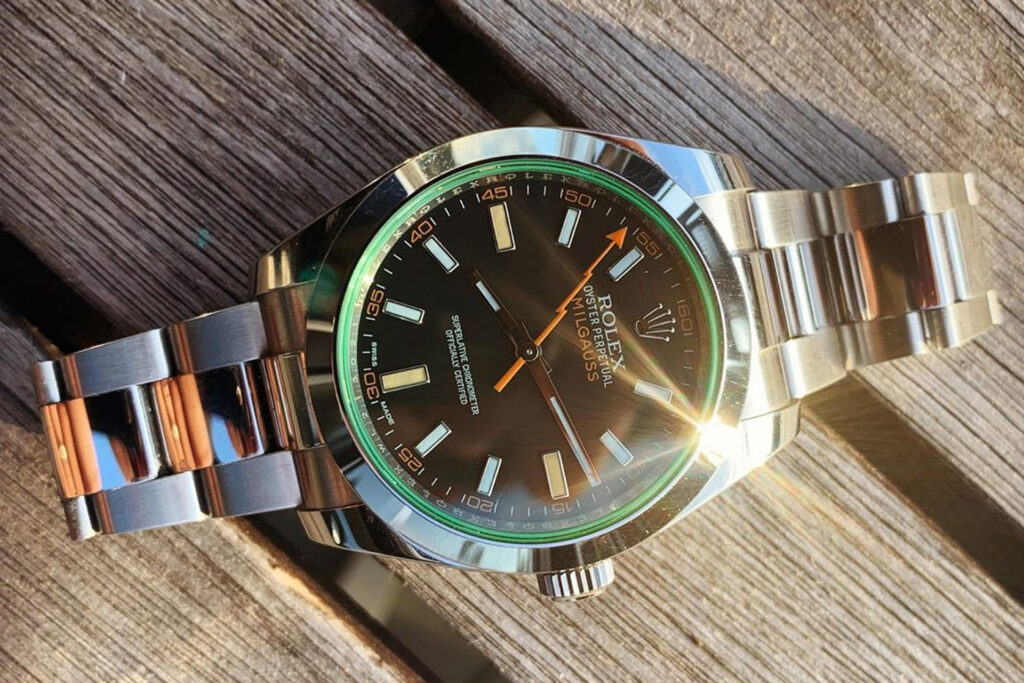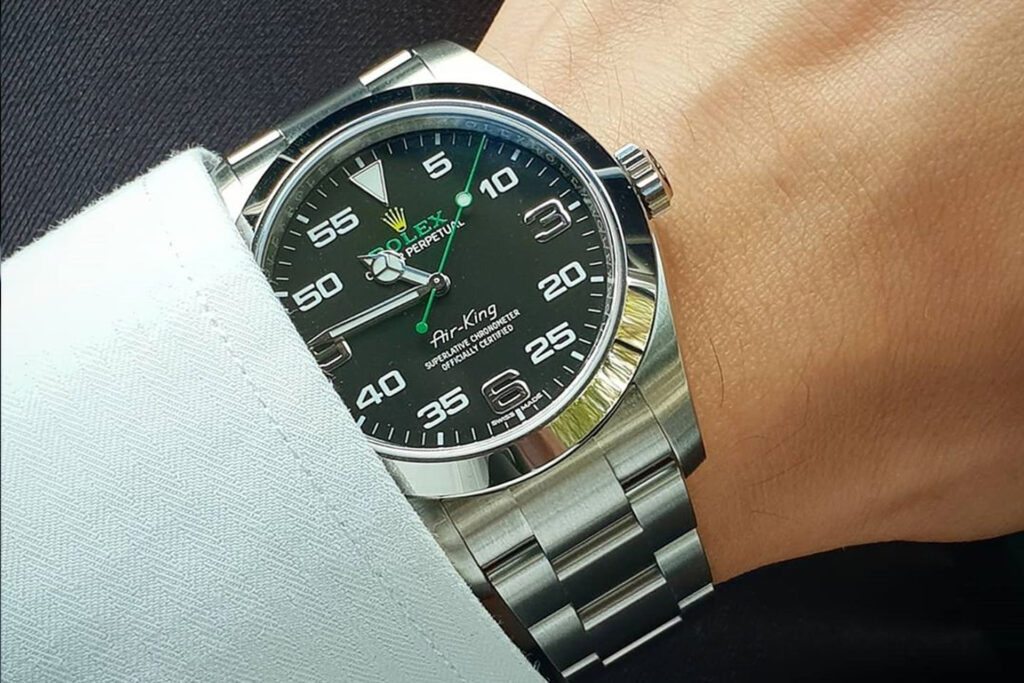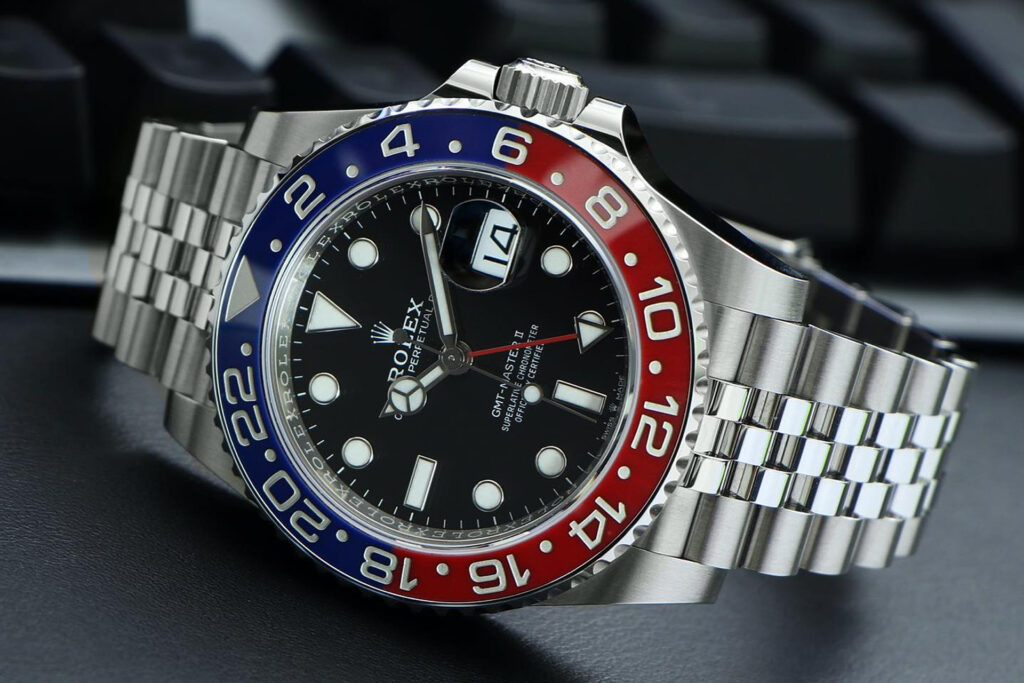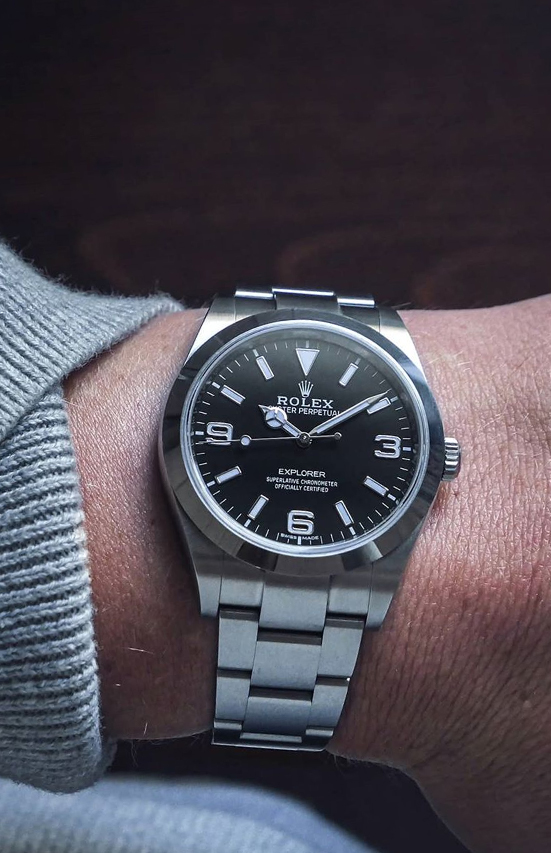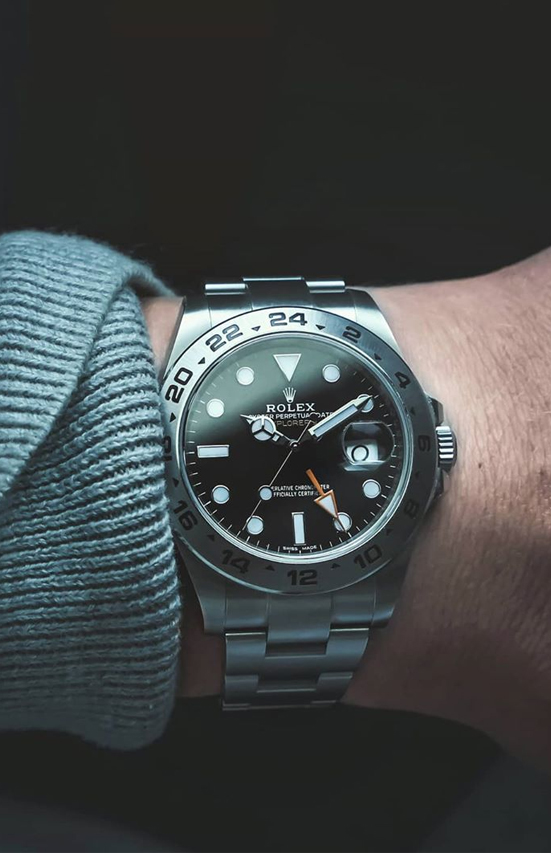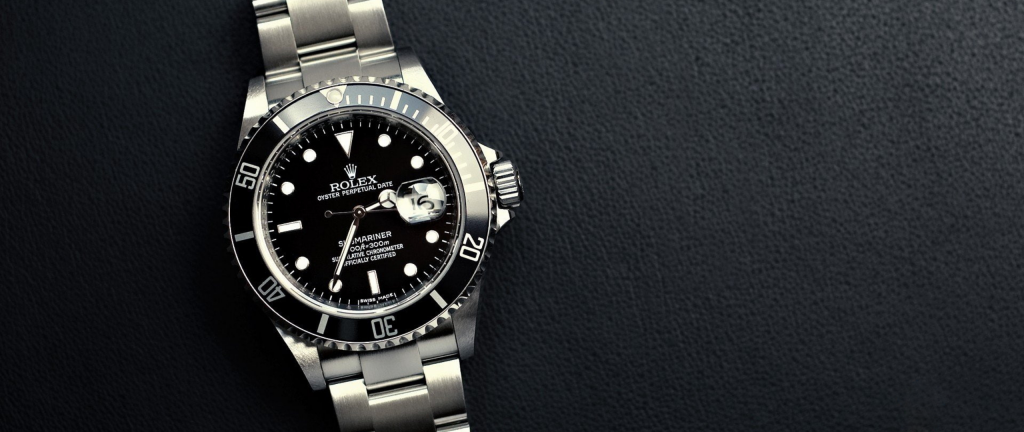
Welcome back to Part II of Modern Rolex Essentials – Professional Series.
In the last installment we covered the Submariner, Sea-Dweller, Yacht-Master & Daytona which represent the brands offering targeted at both nautical and driving enthusiasts. In this installment we will turn our attention to the watches aimed at adventurers on land and in the air.
Once again for the purposes of this article we are specifically sticking the stainless steel variations of these watches. While they are still beautiful in other case materials, most of the ruggedness and practicality is removed with the addition of gold cases, bracelets or diamond set dials or bezels.
Let’s jump in!
Milgauss
An often overlooked model in Rolex’s professional series of watches, the Milgauss was released in 1954. The watch itself was designed as a tool for any scientist, factory or railway worker in the atomic era due to its unique anti-magnetic properties. The name Milgauss is derived from Mille (mil) the French meaning for 1000, combined with Gauss, the measure of magnetic fields. Rolex even went as far as to send this watch over to CERN The European Organization for Nuclear Research for testing of the watches capabilities to ensure this tool could walk the walk.
After maintaining relatively unchanged for a 28 year period the company made the decision to discontinue the Milgauss in 1988 due its poor sales figures and overall unpopularity in comparison to the other models in their catalog.
In 2007 Rolex made the decision to revamp this tool watch while maintaining its signature anti-magnetic abilities. Today the Milgauss is able to combat almost any magnetic force thrown at it, such as a high end speaker system or even medical equipment generating large magnetic fields. All of this said, the 2020 Milgauss most notable features are by far its unique green sapphire crystal which at the right angle can give the watch a green halo effect and its eccentric lighting bolt seconds hand that pays homage to the 1956 version. All in the Milgauss is a polarizing watch but there is no debating this quirky piece has a vibe very different from the rest of the professional series.
- The Doctor
- The Scientist
- The Audiophile
Air-King
The Air-King is one of Rolex’s oldest models making its official debut in the brands line up in 1945. This watch was created to honor the British RAF pilots of the Battle of Britain. Interestingly enough the Air-King was released alongside the Air-Giant, Air-Tiger & Air-Lion as a part of the brands “Air Series” of watches in an attempt to own the aviation market. Today there is only one Air watch standing and it’s the King who reigned supreme with the remainder being discontinued over the years.
The Air-King maintained a modest 34mm case size from 1945 all the way to 2014 when the watch took a short vacation from production. The Air-King was shelved in order to make room for Rolex’s new Oyster Perpetual that was released in 2015 in the brands Classic series. The vintage Air-King’s have become very popular due to the approachable prices and can be spotted accompanying Canadian actor Ryan Gosling while he walks the red carpet. Thankfully the King’s vacation did not last long as it was reintroduced to the royal family in 2016.
The Air-King’s re-release featured the same anti-magnetic movement and 40mm case as the Rolex Milgauss. The newest iteration of the Air-King sports a hectic dial that features stark white 5 minute intervals, solid white gold 3, 6 & 9 markers, a green seconds hand, green Rolex text and a yellow Rolex Coronet. Under no circumstances should this dial work but some how, some way Rolex has managed to pull it off, this watch is a stunner!
- The Pilot
- The Thrill Seeker
- The Quirky One
Case: 40mm
GMT-Master II
The GMT-Master II was designed in partnership PanAm Airlines in 1954 after the company began undertaking transatlantic flights. This unique watch allowed the PanAm pilots to track a second time zone via the unique GMT hand while making time zone adjustments on the go with the multi colored 24 hour rotating bezel. The original GMT Master was released with a red and blue rotating bezel nicknamed the “Pepsi” this variant is still in production today.
Over the years this iconic watch has truly become the ultimate companion for jet setters around the globe due to the watches ability to track multiple time zones. The GMT-Master II has taken on a multitude of different nicknames primarily based on the on bezel color, some of our favorite’s include; the Pepsi, Batman, Rootbeer, and the Coke (also known as the fat lady due to its slightly thicker case size). The GMT-Master II has so many iterations and so much history surrounding it that it can’t all be covered under the essentialist series that said we will be sure to cover it in the future! Due to its versatile aesthetic and useful complication the GMT has been seen on the wrist of many influential people over the years such as; Sylvester Stallone, Brad Pitt, Ellen DeGeneres, Trevor Noah, Clint Eastwood, Tom Selleck and Marlon Brando to name a few.
In 2020 the GMT-Master II is one of the hardest watches in the world to get your hands on at retail, it consistently sells on the second hand market for a significant premium over the MSRP. Today’s lineup of GMT-Master’s is highlighted by the stainless steel models in the “Pepsi” and “Batman” which both come standard on Rolex’s jubilee bracelet which pays homage to the original watch released in 1954.
- The Jet-Setter
- The Trend Setter
- The Boss
Case: 40mm
Explorer
The Explorer was launched by Rolex in 1953 and was coined as the watch that could handle anything life could throw at it. Urban legend has it that this watch accompanied Tenzing Norgay & Sir Edmund Hilary on their inaugural climb of Mt. Everest, while in reality the Explorer had yet to be released and the pair of adventurers were actually wearing modified Oyster Perpetuals. However, in true Rolex fashion the company positioned the Explorer as the Mt. Everest conqueror when it was released later that year. All of this said the Explorer is an absolute tank and is able to handle anything thrown its way representing Rolex’s field watch with its rugged yet compact profile. Today this line has two unique offerings, both stunning and understated while having a very different look;
Explorer (right): Among true Rolex fans the Explorer is known as the ultimate no BS tool watch. The Explorer is unassuming with its satin brushed case, smooth bezel and black dial, yet it remains up for any challenge whether you intend to take on Mt. Everest or even the boardroom. The Explorer has featured its signature black dial and 3, 6 & 9 markers since appearing in 1953 and have not left the watch since. Another key feature of this watch is its ability to fit just about any wrist, today it measures in with a 39mm case which is the smallest among any Rolex Professional model.
Explorer II (left): Revealed in 1971 as the Explorers big brother measuring in at 39mm. The Explorer II featured a fixed 24 hour bezel and a fourth bright orange hand on the watch. These additions were aimed at Spelunkers (cave explorers) who spent many hours in dark caves, the new orange hand would allow the user to distinguish AM & PM as it would point at the fixed 24 hour bezel. Today the fourth hand has been repurposed into a much welcomed GMT hand which allows the user to track dual time zones making it a far more useful complication for the masses. The Explorer II gained much fame when rumors circulated that it was Steve McQueen’s watch of choice, however, this story has since been proven false as there is no evidence that McQueen ever wore this watch, nevertheless the reference 1655 has gained the nickname “The Steve McQueen” which has stuck to this day. Today the Explorer II the comes in 2 variants, a black dial or a white dial also known as the “polar dial”.
Now who should buy the Rolex Explorer? We recommend it to the following;
- The Outdoors Fanatic
- The Person Who Want Only One Watch
- The One Who Likes to Fly Under the Radar
Specifications (Explorer);
